The fourth in a series of full-frame F1.8 primes featuring the mirrorless L-mount, the Panasonic Lumix S 35mm F1.8 is a compact and lightweight semi-wide model for landscapes, candids, and general photography. As a modern design, it features a relatively complex construction consisting of 11 elements arranged in nine groups, with three aspherical and three ED elements to mitigate spherical and chromatic aberration.
The Lumix S 35mm F1.8 lens adopts a linear AF motor for smooth, almost silent focusing and has a closer-than-expected minimum focus distance of just 0.24 m (9.5”).
Like the previous F1.8 models, it shares the same dimensions and placement of controls, even similar weights, and center of gravity. This helps streamline integration with various video rigs and gimbals without the need for additional modification. The lens has a single control ring for manual focus and includes linear and non-linear options to alter focus speed and focus throw. The design also incorporates minimal “focus breathing,” according to Panasonic.
With a 67 mm filter thread, the lens is compact, and it is lightweight given the optical construction, weighing just 295 grams. It is available now for around $697/€659.
You can view the results for all tested lenses and create your own comparisons and in-depth analyses using our interactive image lens comparison tool.
Key specifications:
- 11 elements in 9 groups
- 3 aspherical and 3 ED elements
- 9 blade, circular aperture
- Linear AF motor
- 67 mm filter thread
- Minimum focus distance: 0.24m (9.5”)
- Weight: 295 grams (0.65 lb)
Test results
We tested the Panasonic Lumix S 35mm F1.8 on the 47 MP Panasonic Lumix S1R, the highest resolution camera with an L-mount. The lens and sensor combination achieved a DXOMARK score of 38 points. This is a good result for a moderate wide-angle lens, which in the main is due to high sharpness levels, even wide open at F1.8, and to exceptional transmission.
They’re the highlights, but factors limiting an even better overall score include higher than expected vignetting and distortion. Also surprising, despite the use of 11 elements and ED glass, is the presence of high levels of chromatic aberration. Where supported, however, distortion can be quite well-corrected in software that enables the embedded lens profiles in Raw files and from in-camera JPEGs. The same profiles don’t do anything to mitigate the effects of vignetting and chromatic aberrations.
As always, it’s worth looking through the data to see how the lens performs at individual aperture settings, though bear in mind the results don’t include any software correction.
In-depth comparisons
The Panasonic Lumix S 35mm F1.8 and Panasonic Lumix S1R is a relatively affordable combination aimed at enthusiasts, and so we’ve compared it with the Nikon Nikkor Z 35mm F1.8 S mounted on the Nikon Z 7, which has a similar pixel count. As an L-mount lens, it’s a good opportunity to compare the Leica APO-Summicron SL 35mm F2 on the Panasonic Lumix S1R against the Lumix S 35mm F1.8 paired with the same sensor.
You can see an overview of this comparison in our database.
Sharpness
As a modern lens with a complex optical design, we’re increasingly seeing high sharpness levels at the initial aperture, which we suspect is not only to improve image quality but also aid AF performance. And, so it is here with the Panasonic Lumix S 35mm F1.8. The results of our tests show it has high sharpness when wide open, at least in the center. Away from that central core, sharpness levels are a little lower due to astigmatic-like behavior. Sharpness progressively increases though through to F2.8, with the outer zones being similarly behind. It is not until F4, however, that peak sharpness is achieved and the outer zones reach the levels of the center, though there’s still evidence of the astigmatic-like behavior. Improved uniformity is seen at F5.6 but sharpness levels have by then taken a slight turn in the opposite direction, most likely due to diffraction.
Against the rivals, the Panasonic Lumix S 35mm F1.8 is sharper than the Nikon Nikkor S 35mm F1.8 wide open to F4. It’s only at F5.6 and onwards that the latter equals the newer Panasonic. Against the much pricier Leica APO lens, the Panasonic isn’t quite a match at F2 as the Leica is wide-open and, thanks to some field-curvature, the latter struggles somewhat to keep up, especially in the outer zones.
Chromatic aberration
The high levels of lateral chromatic aberration seem to somewhat belie the complex construction and use of ED glass. Fringing in excess of 20 µm at every aperture in the corners is unusual in a modern lens. Although the results are published without any profile correction applied, it appears there’s no lateral CA correction data in the RW2 Raw files anyway. Despite that, lateral chromatic aberration is typically easily removed in software, either using a third-party profile or an algorithm-based de-fringing slider tool.
Both the Leica and Nikkor lens are presented here without profile correction and are very well corrected optically. Additional correction provided by the Leica APO lens for longitudinal chromatic aberration is not likely to be revealed in this test.
Geometric distortion
Barrel distortion in the Lumix S 35mm F1.8 is high at -2.6%, which would be easily visible in scenes with straight edges. Fortunately, the embedded profile corrects this reasonably well, even if it leads to a reduction in the diagonal field of view (FOV). While this is normal for a lens like this, the decrease brings the FOV in line with that expected of a typical 35mm lens.
The best optically corrected of the three is the larger, more expensive Leica APO, which is negligible at just -0.1% and goes some way to explain the price difference. The Nikkor is also well-corrected at just -0.5%, though that might still be visible at times.
Vignetting (corner shading)
Vignetting is another shortcoming that’s usually compensated for by a profile and while often disregarded for aesthetic reasons, heavy correction can reveal noise in the lightened areas. The Panasonic raw files don’t contain any correction data, so the vignetting wide open at F1.8 in the corners is quite typical for a lens like this at -2.1EV. Vignetting remains when stopping down a stop to F2.8, albeit greatly diminished, and by F4 it’s negligible and completely free by F5.6.
By contrast, the Leica and Nikon have very slightly lower, and visually similar, levels at the maximum aperture, but they both have more vignetting at F2.8 than the Panasonic. More importantly, perhaps, both never totally clear the effects of the vignetting, even when stopped down at F4 and smaller apertures.
Transmission
High levels of transmission, where the measured T-stop is as close to the quoted F-stop, is useful to know when you’re using lenses for videography but is rarely needed with stills. Nevertheless, the high transmission may help with higher exposure values and reducing noise levels in image sensors and in that regard, the Panasonic lens performs very well. Indeed, it is one of the few we’ve seen where the lens has the same T-stop measurement as the reported initial aperture. The Leica APO 35mm is another example, however, and even the Nikkor has excellent transmission at T1.9, just -0.1EV below the reported F1.8 maximum.
Conclusion
Modern lens designs continue to offer lots of advantages in terms of high sharpness levels, even from the initial aperture, while the use of embedded profiles can help in reducing the size, complexity, and cost.
The Panasonic Lumix S 35mm F1.8 is relatively compact and performs very well in key areas such as sharpness and transmission. However, there are some tradeoffs that are only partially mitigated by the inclusion of correction data (profiles) in the raw files. Given the price ($697/€659), it’s an interesting alternative to the Leica L-mount alternative, and a solid choice if you’re on a budget.
In this review, we have compared the Panasonic Lumix S 35mm F1.8 mounted on a Panasonic Lumix DC-S1R to its closest rivals from other brands. Remember that the lenses may be used on various cameras with different sensors, or in some cases on different camera systems using different mounts, so the results will vary between them.
As usual, you can create your own comparisons and in-depth analyses using our interactive image lens comparison tool.


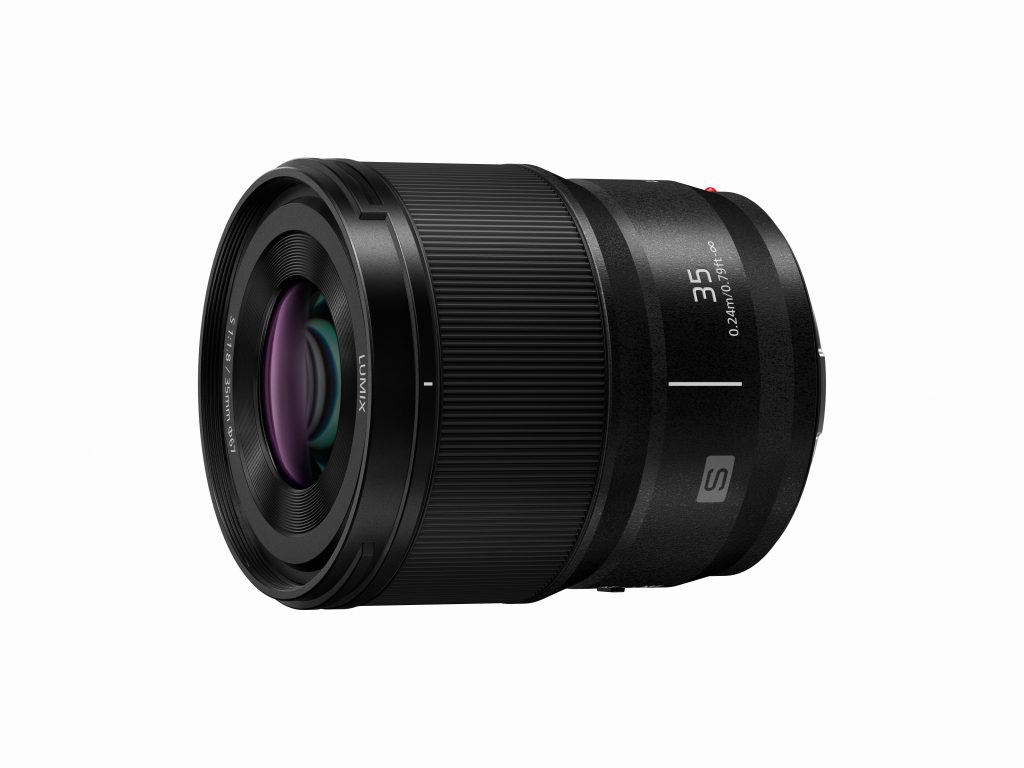


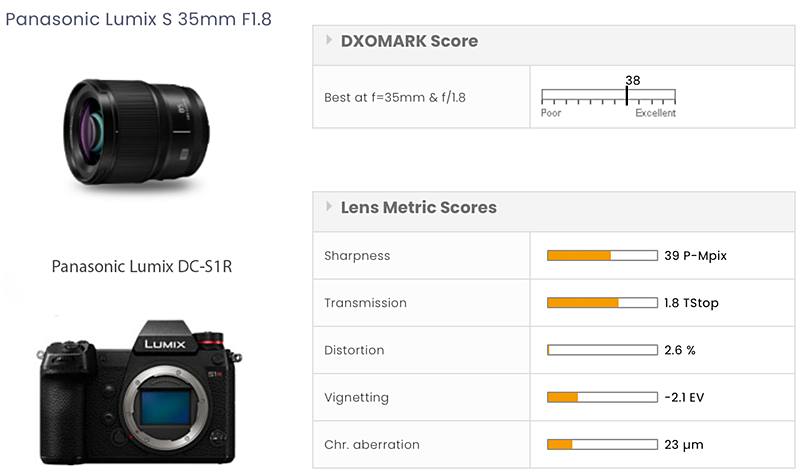
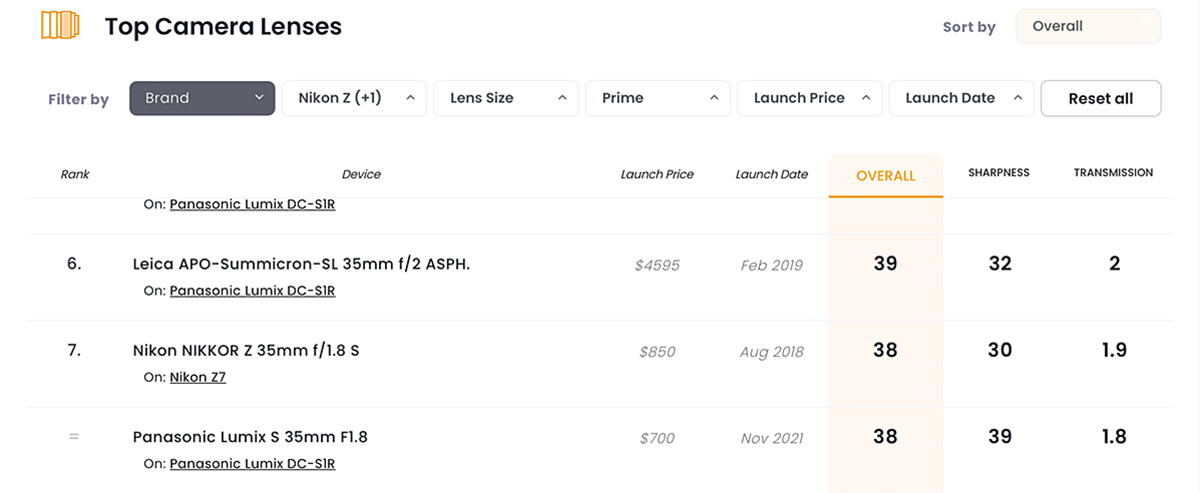
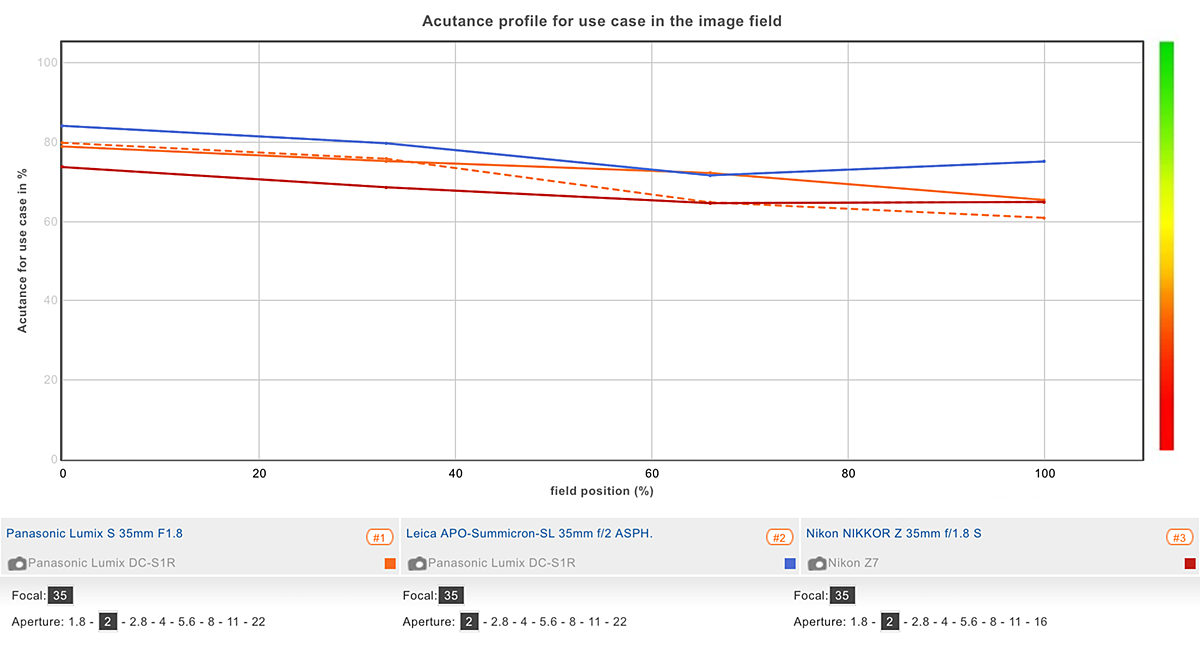
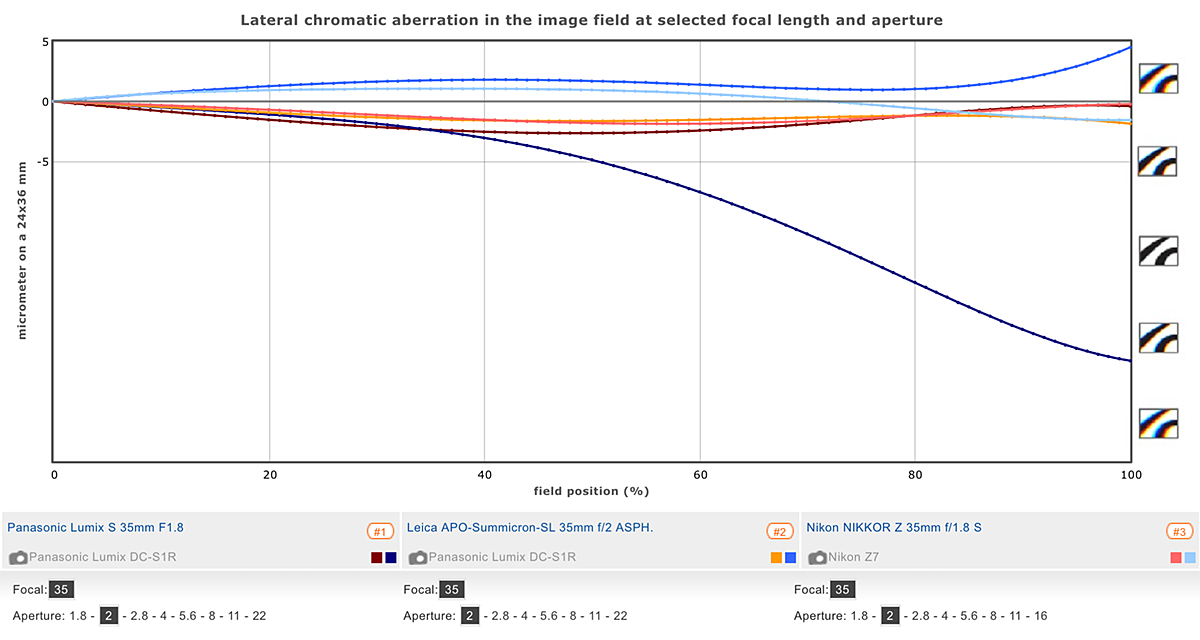
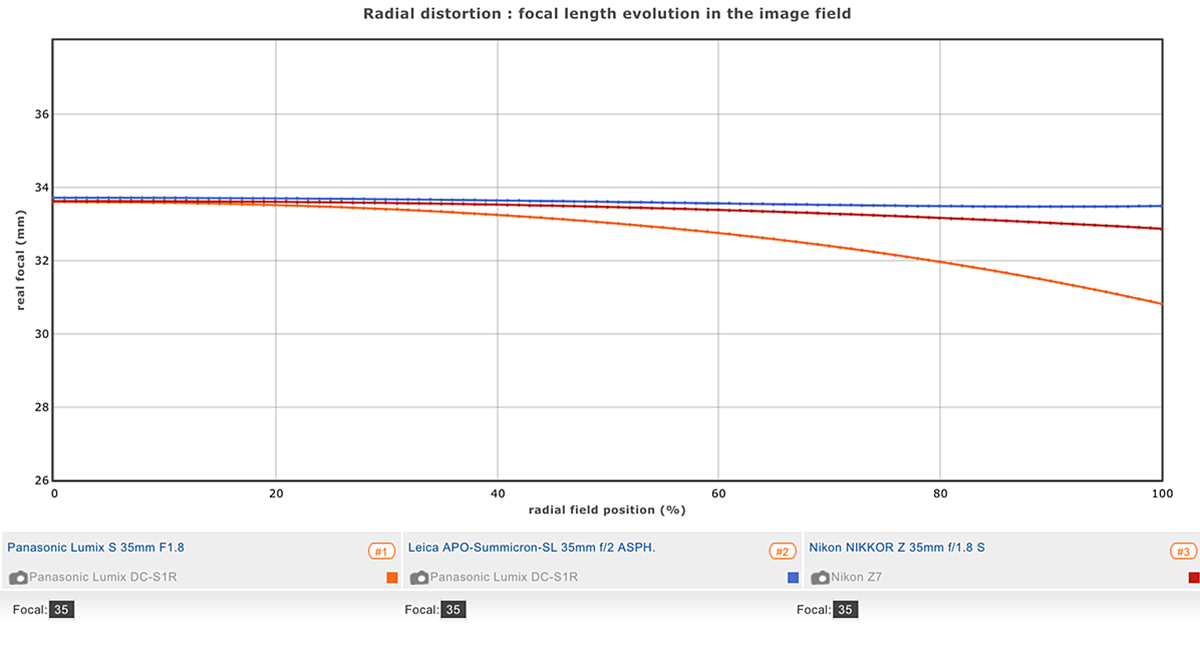
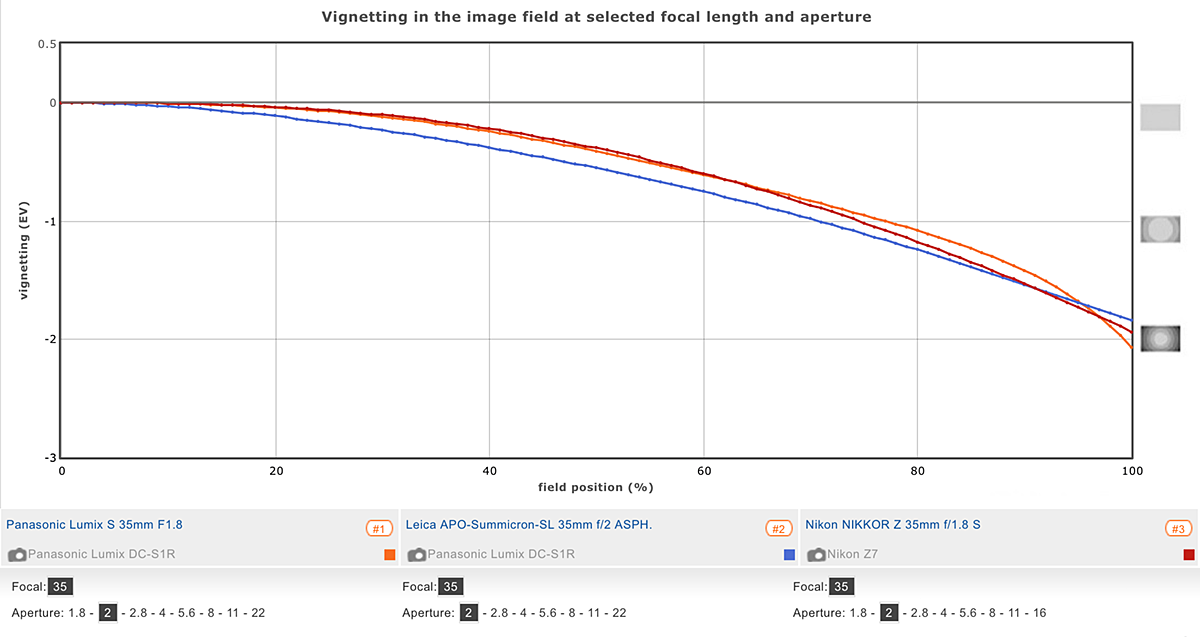
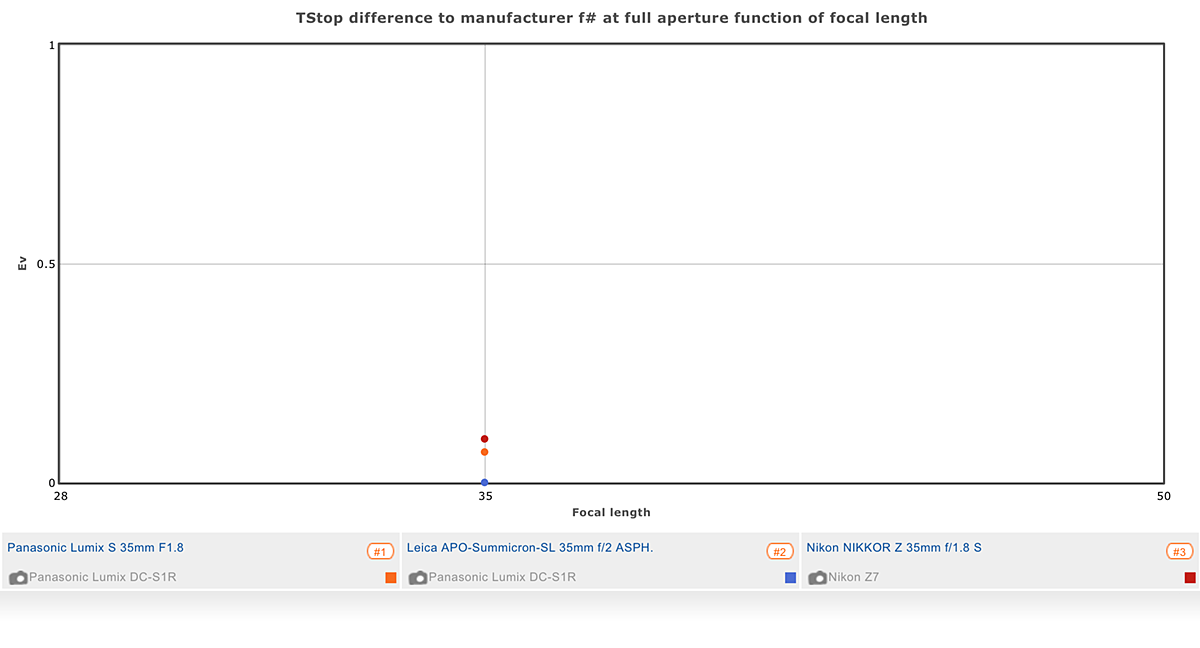
DXOMARK encourages its readers to share comments on the articles. To read or post comments, Disqus cookies are required. Change your Cookies Preferences and read more about our Comment Policy.